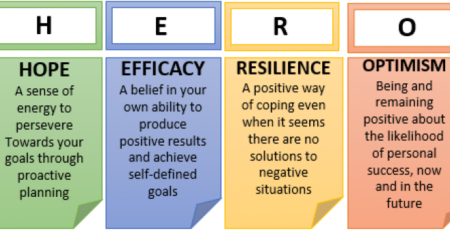Top 10 Takeaways: A Great Place to Work for Allhappy
In my early 20’s, while still living and working in Rio de Janeiro, I used to keep an eye on the GREAT PLACE TO WORK® list published annually by the Fortune magazine. I confess that back then I would often daydream of working for such companies. At the age of 27, I finally joined the first big 5 consulting firm of my IT career, which was a certified GREAT PLACE TO WORK organisation and so was my client, a large Oil & Gas Brazilian company – not so popular these days…
Fast forward 15 years and I now run a coaching-consulting business with a mission to help business owners and leaders to build a GREAT PLACE TO WORK (GPTW). Recently, while revamping my website I realized I was referring to the trademarked term GPTW a few times and decided to look into the criteria adopted (nowadays) by the GPTW team to rank and certify organisations. Times have changed and what was good enough to get into the list 10-20 years ago are no longer.
As a result of my research I bumped into A Great Place to Work For All from Michael C. Bush – CEO of GREAT PLACE TO WORK (US). I listened to the audio book in one sitting and after watching a few of his videos I reached out to Michael on LinkedIn. He warmly accepted my invitation to connect and I’ve been following his work closely since then.
I highly recommend the book which draw from data collected over 2 decades of research to produce Best Places to Work lists in 50 countries across 6 continents. Every year the GPTW team surveys more than 4 million employees from over 6,000 companies (all sizes and industries). These companies collectively employ more than 10 million people!
Below is a list of my key takeaways from the Mr. Bush’s book:
1. Better for Business. Better for People. Better for the World.
Simply put, a great company culture have a positive ripple effect. It allows and encourages employees to bring their best-whole selves to work which impacts the business bottom line, which benefits the community, the company ecosystem and therefore the world.
2. Original Model: Trust, Pride & Camaraderie
The original GPTW model used to evaluate companies was based on how people experienced these 3 qualities in relation to their work and their colleagues.
3. New Model: The 6 Elements
The GPTW model has evolved and now takes into consideration 6 elements: Values, Innovation, Financial Growth, Leadership Effectiveness, Maximizing Human Potential and Trust. The second last – Maximizing Human Potential – is central to their new methodology given the demands of this day and age.
There were 2 key motivations to refine the model:
- The new landscape facing organisations – a new business frontier characterized by social changes, technological changes and the gig economy.
- Research shows that in some pockets of certified GPTW organisations people were not experiencing a great culture.
4. Closing the GAP: Creating a consistent experience FOR ALL
Discrepancies in previous research data has shown that many GPTW places have been great for some but not FOR ALL. Inconsistency was typically found between executives and front line managers, between men and women, between different generation cohorts, between people from different ethnic and racial identities. Hence the GPTW trademark (and mission) was extended to include the FOR ALL piece, with the intention to close this gap.
5. Leadership Effectiveness
GREAT PLACES TO WORK have highly functional Executive Teams with excellent interpersonal trust. This role model often cascades down and influences other levels of the organisation.
GREAT PLACES TO WORK FOR ALL have a Senior Leadership Team that reflects the demographics of the organisation. We can find people from diverse backgrounds in every level of leadership.
6. The GPTW Leadership Model
Maximizing Human Potential through leadership effectiveness is vital for businesses to thrive in this new business frontier. The GPTW Leadership Model outlines the 5 Levels of leaders, their key behaviors and tips to grow:
- The Unintentional Leader – easy to spot. Often not very conscious on the impact they have on others. Fail to inspire confidence. Typically great technicians who were promoted to managers before acquiring sound people skills.They might take credit for their team’s work and raise voice when frustrated. TIPS: get proper training. Be more approachable. Adopt a more collaborative attitude.
- The Hit or Miss Leader – an ally to some but not to others. Hot and cold. Lack of adequate people skills. Often play favorites (intentionally or unintentional). Don’t work well with other teams causing communication breakdown. Create an atmosphere of uncertainty. TIPS: eliminate favoritism. Communicate with people inside and outside your team. Show appreciation for people’s effort.
- The Transactional leader – Values checking things off the list, especially items related to their own goals. They are good on what they do and focused on KPI’s – not very charismatic though. Style of working and communication is still inconsistent. Not necessarily encourage thinking out the box therefore don’t promote innovation. Employees might experience politics and back-stabbing. Value getting things done over talking to people. Don’t know much what is going on people’s personal lives. They might feel like a small cog on a bureaucratic machine. They are often more confident about their technical than soft skills. Can be described by direct reports as efficient but cold. TIPS: Stop operating on auto-pilot and build good people skills and habits. Communicate with direct reports more consistently. Welcome their input and show how their work fits into the big picture. Express their sincere interest in employees as people.
- The Good Leader – Consistent, inclusive and sincere. They understand mistakes happens and that people have lives outside of work. Often described as “easy to talk to”. They are the reason why some employees stay. They might feel the ultimate responsibility to achieve goals lies with them not their teams. Overall they are good for business. Help employees with their careers and recommend them to promotions. Have been a mentor. Haven’t been able to establish a good rapport with a few people. Think is important for others to see them as a leader. Receives generally good 360 reviews. TIPS: Focus on the long term view. Invest in articulating organisation’s goals in a way that help people feel inspired and connected with them. Must let go of their ego and the need to be perceived as the boss.
- The For All Leader – Truly have employees best interest in mind. Lead successful teams. They are servant leaders who don’t take credit for their teams’ work. They lead from behind and treat all people with dignity. They walk the talk, lead by example and are perceived by employees as honest and ethical. They welcome feedback. Achieve remarkable results. Their teams are innovative, deliver at agile pace and intend to stay. They inspire loyalty, performance and growth in others. Surround themselves with smart and engaged people. Experience low voluntary turnover. TIPS: To remain a For All leader in the midst of ongoing changes one should constantly re-evaluate what teams and people need to be successful. To remain open and flexible they should work on own personal growth maybe through training or meditation.
A few examples of FOR ALL LEADERS: Marc Benioff (Sales Force), Heather Brunner (WP Engine), Arne Sorenson (Marriot CEO), Michael Stevenson (AT&T), Steph Curry (NBA), Braith Marsenic (E&Y) and Tim Ryan (PWC).
7. High Trust Culture
A high trust culture fuels business performance – horizontally and vertically.
The 3 elements of a High Trust Culture are Credibility, Respect and Fairness. Employers trust leaders when they see them as credible, respectful and fair.
The Trust for All Mindset is exhibited by leaders who truly listen to their employees. They have a healthy belief system about their teams. They are genuinely curious and have faith in people.
8. Innovation by All culture
A GREAT PLACE TO WORK promotes a decentralized innovation strategy and bottom-up innovation. Employees in every corner of the organisation are empowered to share ideas and feel safe to speak up. Leaders tap into new angles and perspectives from all levels.
9. Values in Action
In GPTW organisations Values are used to guide how people work on a daily basis and how they make decisions. Values are the bedrock principle that guides executive decisions that cannot be made based on spreadsheets. Matters like hiring, firing, geographical expansion, mergers and acquisitions are based on those values.
10. The 5 Steps Formula for a GPTW for ALL
- Survey your employees about their work experience.
- Objectively review what they are saying.
- Think about how your leadership and the leadership of others needs to change to create an environment where employees have a better experience, regardless of who they are and what they do for the organisation.
- Get help with your leadership practices.
- Repeat steps 1-4.
***
In conclusion I was inspired and excited to learn more about the methodology and philosophy behind a GREAT PLACE TO WORK® and I wish that Michael C. Bush ambitious mission is realized by 2030 (or earlier) for a better society!
To learn more about GREAT PLACE TO WORK visit:
#GPTW #GPTW4ALL #LEADERSHIP #DIVERSITY #MINDFULNESS #CULTURE
#COMPASSION #ConsciousCapitalism #HumanityinBusiness #GreatPlacetoWork















Leave a Reply